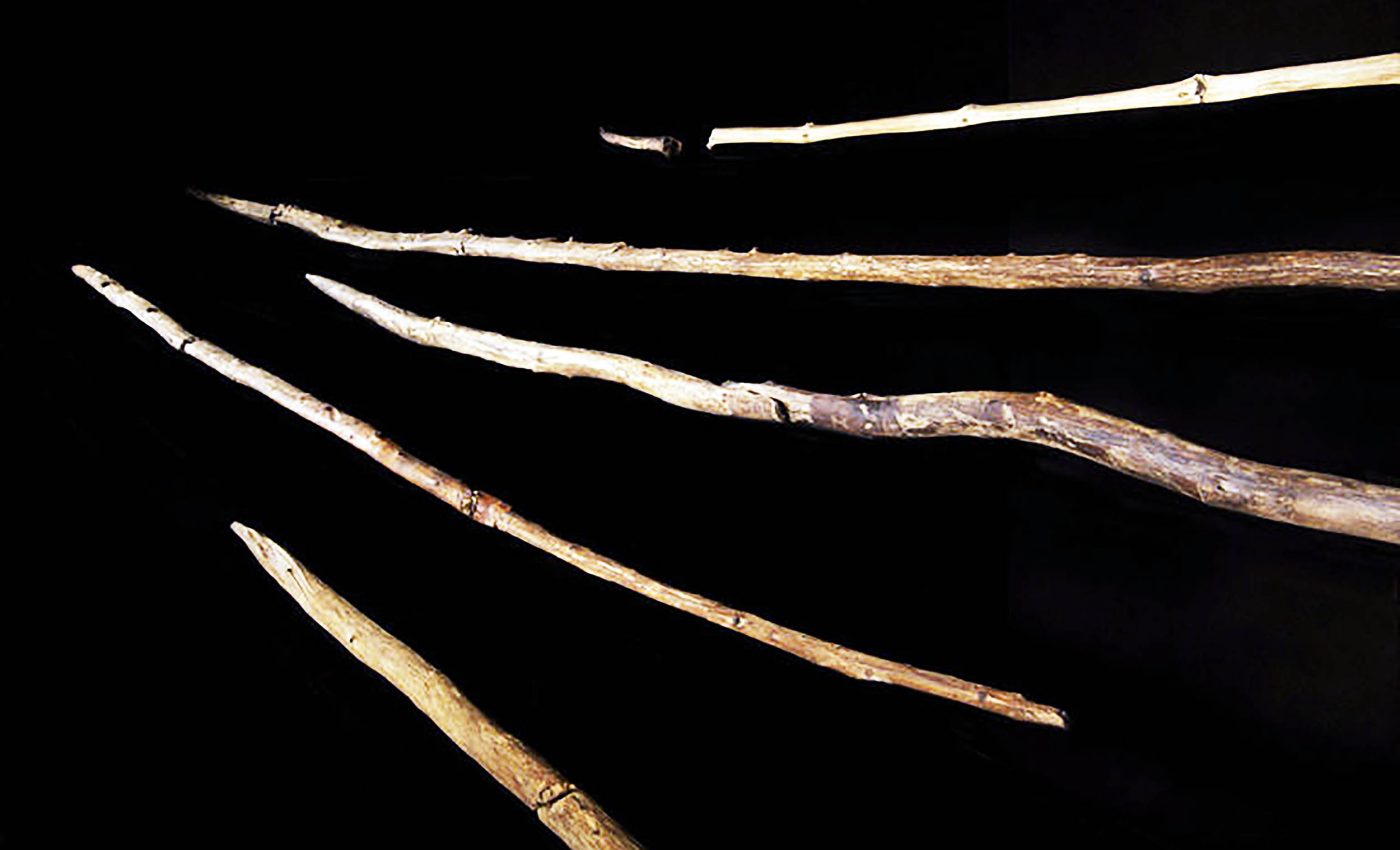
Famous wooden spears, 100,000 years older than believed, may have been used by Neanderthals
Archaeologists in Germany have identified a set of wooden spears that might be younger than previous estimates. This shift in timing raises questions about which early group, potentially Neanderthals, actually crafted them.
The artifacts turned up in a coal mine in the town of Schöningen and were once thought to be extremely old. However, new data sets their age closer to 200,000 years.
Neanderthal spears show early craftsmanship
“[The spears are] pretty sophisticated for something that old,” said study co-author Jarod Hutson with the Smithsonian National Museum of Natural History. These long, pointed implements were made from spruce or pine and have been described as early hunting tools.
Each spear shows signs of careful shaping and maintenance. Researchers believe these objects reflect a well-planned approach to gathering resources in a sometimes harsh landscape.
Early theories placed such devices in the hands of an earlier human ancestor. If the new time estimate is accurate, these weapons would fall into the era associated with Neanderthals, a group known for robust builds and distinctive skull shapes.
Specialists have often debated how complex Neanderthal tool use really was. This fresh look at wooden weaponry brings fresh opinions about their skills and social organization.
Revised age for Schöningen spears
The Schöningen site sits in a sediment sequence that has generated intense discussion about glacial and interglacial phases.
Stratigraphy is the study of how these layers formed and changed over time, and it helps researchers understand how old artifacts might be.
Revising a single layer’s date can shift an entire view of prehistory. That is why these new calculations have caused so much excitement among archaeologists who study that area.
This updated timeline used amino acid approaches, which measure protein breakdown in fossils. Such chemical signatures can hint at a more precise age range than older methods.
If those measurements hold up under further testing, the results will spark more investigations of early woodworking and hunting.
Researchers are also interested in how these same techniques might refine the chronology of other major sites.
Spears show strategic Neanderthal thinking
A single wooden spear could mean many things, but a collection suggests a shared plan. Some anthropologists argue that groups who invested in multiple weapons likely participated in cooperative hunts.
This hints at coordinated tactics in tracking and killing animals. However, more study is needed to confirm whether there was a group strategy behind each find.

These wooden spears hint at a level of planning and resourcefulness that challenges outdated stereotypes.
Many people once believed Neanderthals relied solely on crude stone tools, but findings like these suggest a broader range of behavior.
Discoveries of advanced hunting methods also suggest they thrived in Europe’s variable environments. This adaptability might have boosted their chances of survival for thousands of years.
Why does any of this matter?
Insights from this location overlap with broader trends in European Pleistocene sites, a geologic epoch spanning over two million years. Finds of bone and stone remain the backbone of early archaeological evidence.
Wood is less durable, so each wooden tool that survives the millennia is a rare treasure. This ephemeral material can shift our perspective on what these groups did day-to-day.
Additional research at neighboring Paleolithic areas might reveal more wooden implements. Such comparisons help experts piece together a fuller story of how ancient communities spread across different regions.
If scholars uncover parallel artifacts or similar manufacturing patterns, it may strengthen the case for widespread woodworking traditions. Consistent data across multiple sites could then paint a richer picture of hominin culture.
Neanderthals spears challenge old assumptions
Some wonder if these tools are just the start of a deeper look into Neanderthal technology. Future work could pinpoint exactly how these spears were fashioned and used.
Advanced imaging and experimental replicas might highlight details of wear and tear on the spear tips. Those comparisons could reveal whether they served for throwing or thrusting at prey.
Arguments about the date of these artifacts reflect the constant refinement in archaeology. Shifts in scientific perspectives often hinge on new evidence or improved methods.
Such revisions do not undermine previous efforts but rather build on them. Every updated finding invites a broader look at human origins and adaptations.
Whether these spears belonged to Neanderthals or an earlier group, they remain a remarkable window into ancient lives. The success of wooden weaponry supports an image of skilled hunters who understood local materials.
Further investigations in Germany and beyond may clarify who wielded them. Researchers await more refined techniques.
The study is published in Science Advances.
—–
Like what you read? Subscribe to our newsletter for engaging articles, exclusive content, and the latest updates.
Check us out on EarthSnap, a free app brought to you by Eric Ralls and Earth.com.
—–













